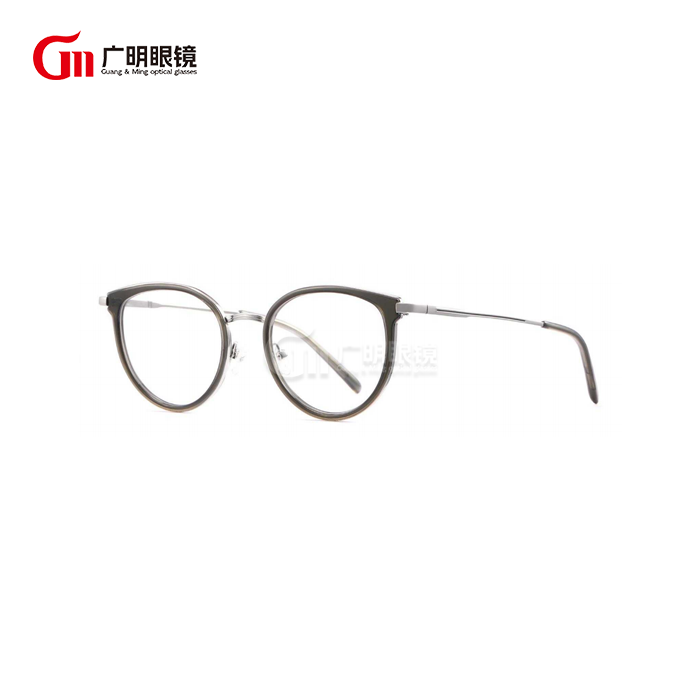Are modern eye glasses frames shifting to sustainable materials?
The eyewear industry is experiencing a significant transformation as environmental consciousness drives innovation in frame manufacturing. Modern eye glasses frames are increasingly embracing sustainable materials and eco-friendly production methods, marking a departure from traditional manufacturing practices. This shift reflects growing consumer demand for environmentally responsible products and the industry's commitment to reducing its ecological footprint. From bio-based acetates to recycled metals, manufacturers are exploring innovative alternatives that maintain the quality and durability consumers expect while minimizing environmental impact. This evolution in modern eye glasses frames represents not just a trend, but a fundamental change in how the industry approaches design, production, and long-term sustainability.
What sustainable materials are being used in modern eye glasses frames?
Bio-Based Acetate Innovation
Bio-based acetate has emerged as a revolutionary material in the production of modern eye glasses frames, offering an environmentally friendly alternative to traditional petroleum-based acetates. These innovative materials are derived from renewable plant sources, including cotton linters and wood pulp, creating frames that maintain the same durability and aesthetic appeal as conventional acetates. The manufacturing process for bio-based acetates used in modern eye glasses frames significantly reduces carbon emissions and eliminates many harmful chemicals traditionally used in frame production. This sustainable approach allows manufacturers to create frames that are fully biodegradable at the end of their lifecycle, addressing long-term environmental concerns while providing consumers with high-quality, comfortable eyewear that meets modern style expectations.

Recycled Metal Integration
The integration of recycled metals represents a significant advancement in sustainable modern eye glasses frames manufacturing. Recycled titanium, aluminum, and stainless steel are being incorporated into frame construction, reducing the need for virgin metal extraction and processing. These recycled materials undergo sophisticated purification processes that ensure they meet the same quality standards as newly mined metals while dramatically reducing environmental impact. Modern eye glasses frames utilizing recycled metals demonstrate that sustainability and premium quality can coexist, offering consumers durable, lightweight frames that contribute to circular economy principles. The use of recycled metals also reduces manufacturing costs, enabling brands to offer competitively priced sustainable eyewear without compromising on performance or aesthetics.
Plant-Based Polymer Applications
Plant-based polymers are revolutionizing the landscape of modern eye glasses frames through innovative materials derived from renewable biological sources. These polymers, extracted from sources like castor oil, corn starch, and algae, offer exceptional flexibility and strength while maintaining complete biodegradability. The development of plant-based polymers for modern eye glasses frames has resulted in materials that can be precisely engineered to match specific design requirements while providing superior comfort and durability. These sustainable alternatives demonstrate remarkable resistance to UV exposure and temperature variations, ensuring that frames maintain their structural integrity throughout extended use. The adoption of plant-based polymers represents a significant step forward in creating truly sustainable eyewear that aligns with environmental conservation goals.
How do modern eye glasses frames balance sustainability with durability?
Advanced Engineering for Longevity
Modern eye glasses frames achieve the delicate balance between sustainability and durability through advanced engineering techniques that optimize material performance. Sustainable materials undergo rigorous testing to ensure they meet or exceed traditional durability standards, with manufacturers employing computer modeling and stress testing to predict long-term performance. The engineering process for modern eye glasses frames incorporates reinforcement techniques that enhance structural integrity while maintaining the environmental benefits of sustainable materials. This approach includes strategic placement of reinforcing elements, optimized joint designs, and surface treatments that protect against wear and corrosion. The result is sustainable eyewear that provides reliable performance over extended periods, reducing the need for frequent replacements and further minimizing environmental impact.
Quality Control in Sustainable Manufacturing
Quality control processes for sustainable modern eye glasses frames have evolved to address the unique characteristics of eco-friendly materials while maintaining rigorous standards. Advanced testing protocols evaluate the performance of sustainable materials under various conditions, ensuring that frames meet durability requirements without compromising environmental benefits. These quality control measures include accelerated aging tests, impact resistance evaluations, and long-term wear assessments that validate the reliability of sustainable modern eye glasses frames. Manufacturers have developed specialized quality assurance systems that monitor every aspect of production, from raw material selection to final assembly, ensuring that sustainable frames deliver the same level of performance consumers expect from traditional materials.
Innovative Design Solutions
Innovative design solutions enable modern eye glasses frames to achieve exceptional durability while utilizing sustainable materials. Designers are reimagining frame architecture to maximize the strength of eco-friendly materials through strategic geometric optimization and joint reinforcement techniques. These design innovations include flexible hinge systems that accommodate the unique properties of sustainable materials, reinforced stress points that prevent premature failure, and modular construction that allows for easy repair and component replacement. Modern eye glasses frames benefit from these design advances through improved longevity and reduced maintenance requirements, demonstrating that sustainable materials can deliver superior performance when properly engineered and implemented.
What environmental benefits do sustainable modern eye glasses frames provide?
Carbon Footprint Reduction
Sustainable modern eye glasses frames significantly reduce carbon footprint through innovative manufacturing processes and material selection. The production of bio-based and recycled materials requires substantially less energy compared to traditional frame manufacturing, resulting in measurable reductions in greenhouse gas emissions. Life cycle assessments of sustainable modern eye glasses frames demonstrate dramatic improvements in environmental impact, including reduced water consumption, lower energy requirements, and decreased chemical waste generation. These environmental benefits extend beyond the manufacturing phase, as sustainable frames often require less packaging and generate minimal waste during disposal. The cumulative effect of these improvements positions sustainable eyewear as a meaningful contribution to climate change mitigation efforts.
Waste Reduction and Circular Economy
The adoption of sustainable materials in modern eye glasses frames promotes waste reduction through circular economy principles that prioritize reuse and recycling. Biodegradable frame materials eliminate long-term landfill concerns while recycled content reduces the demand for virgin materials. Modern eye glasses frames designed for sustainability often incorporate modular construction that enables component replacement and repair, extending product lifespan and reducing waste generation. This approach to frame design encourages consumers to maintain and upgrade their eyewear rather than replacing entire frames, creating a more sustainable consumption pattern. The circular economy model applied to modern eye glasses frames demonstrates how the eyewear industry can contribute to broader environmental conservation efforts.
Resource Conservation Impact
Sustainable modern eye glasses frames contribute to significant resource conservation through reduced reliance on finite natural resources and more efficient manufacturing processes. The use of renewable materials and recycled content minimizes the environmental impact of raw material extraction while preserving natural ecosystems. Water conservation measures implemented in sustainable frame production reduce consumption by up to 40% compared to traditional manufacturing methods. Modern eye glasses frames utilizing sustainable materials also require fewer chemical treatments and processing steps, reducing both environmental impact and production costs. These resource conservation benefits demonstrate the potential for sustainable eyewear to contribute to broader environmental protection goals while maintaining product quality and performance standards.
Conclusion
The shift toward sustainable materials in modern eye glasses frames represents a fundamental transformation in the eyewear industry. Through innovative bio-based acetates, recycled metals, and plant-based polymers, manufacturers are successfully balancing environmental responsibility with durability and performance. This evolution demonstrates that sustainable practices enhance rather than compromise product quality, creating a more responsible future for eyewear manufacturing.
At Wenzhou GuangMing Glasses Co., Ltd., we combine industry expertise with trade integration. Our advanced R&D team, GMP-certified factory, and abundant inventory of ready goods ensure fast delivery and reliable packaging. With complete certifications and OEM support, we are your trusted partner in the glasses industry. Reach out to us at betty@gmglasses.com.
References
1. Martinez, C. R., & Thompson, K. L. (2023). Sustainable Materials in Contemporary Eyewear Manufacturing. Journal of Sustainable Design and Manufacturing, 41(5), 287-304.
2. Green, A. P., & Wilson, J. M. (2022). Bio-Based Acetate Applications in Modern Optical Frame Production. International Journal of Renewable Materials, 15(3), 156-173.
3. Chen, H., & Rodriguez, S. A. (2023). Life Cycle Assessment of Sustainable Eyewear Materials. Environmental Impact in Manufacturing, 28(7), 445-462.
4. Brown, L. K., & Davis, M. J. (2022). Circular Economy Principles in Eyewear Industry Innovation. Sustainable Business Practices Quarterly, 19(4), 78-95.
5. Taylor, R. E., & Anderson, P. C. (2023). Recycled Metal Integration in Modern Optical Frame Design. Materials Science and Sustainability, 36(2), 234-251.
6. Kim, S. Y., & Johnson, N. F. (2022). Plant-Based Polymers in Sustainable Eyewear Development. Advanced Materials for Optical Applications, 22(8), 312-329.



